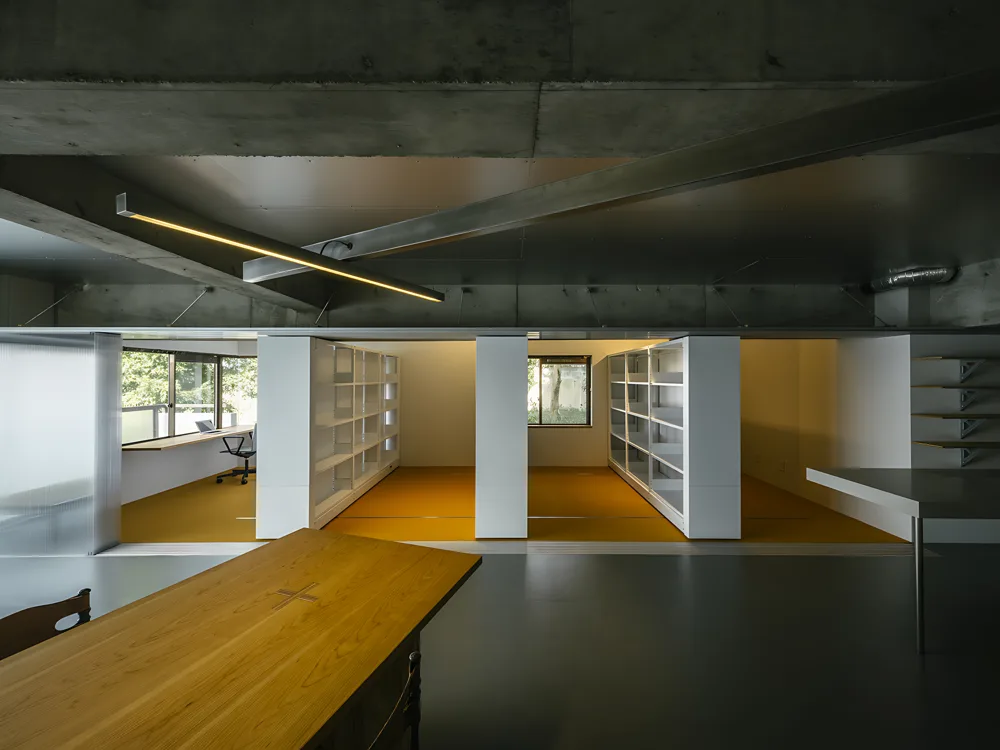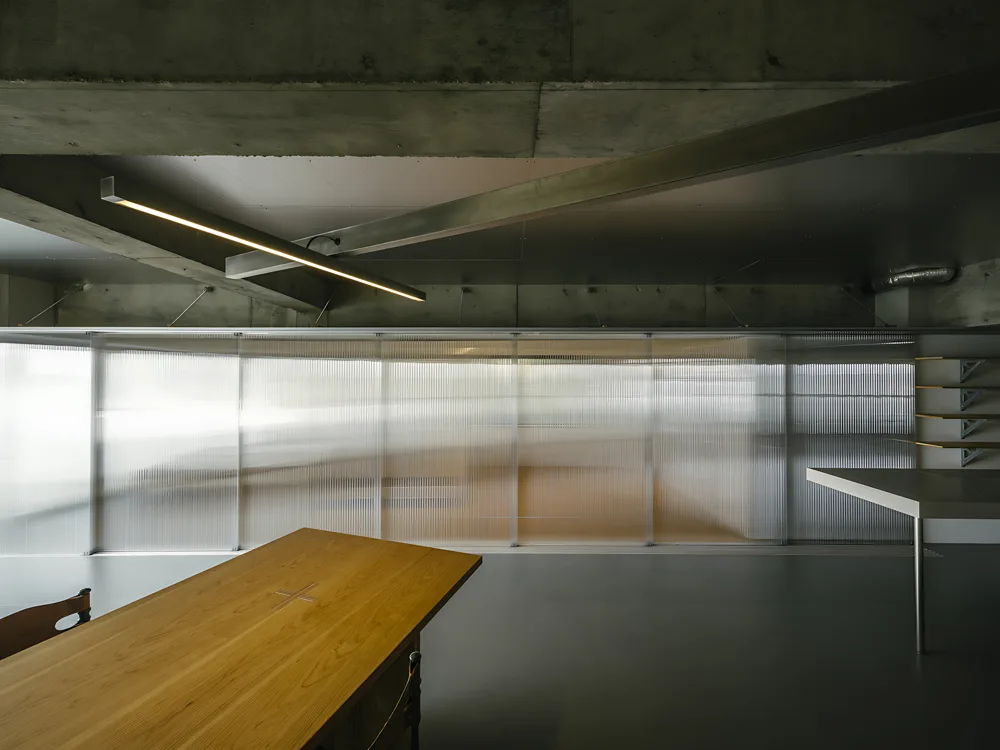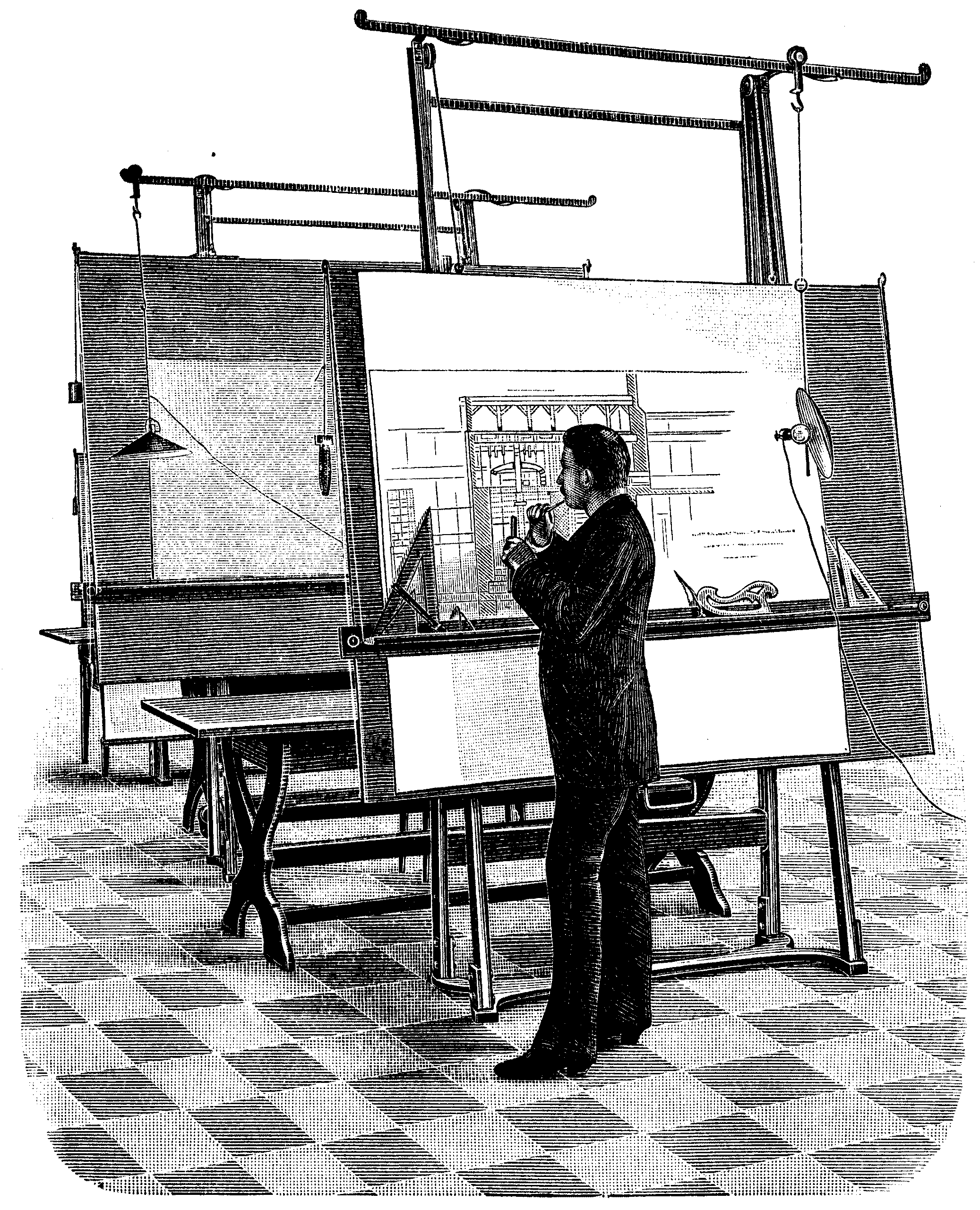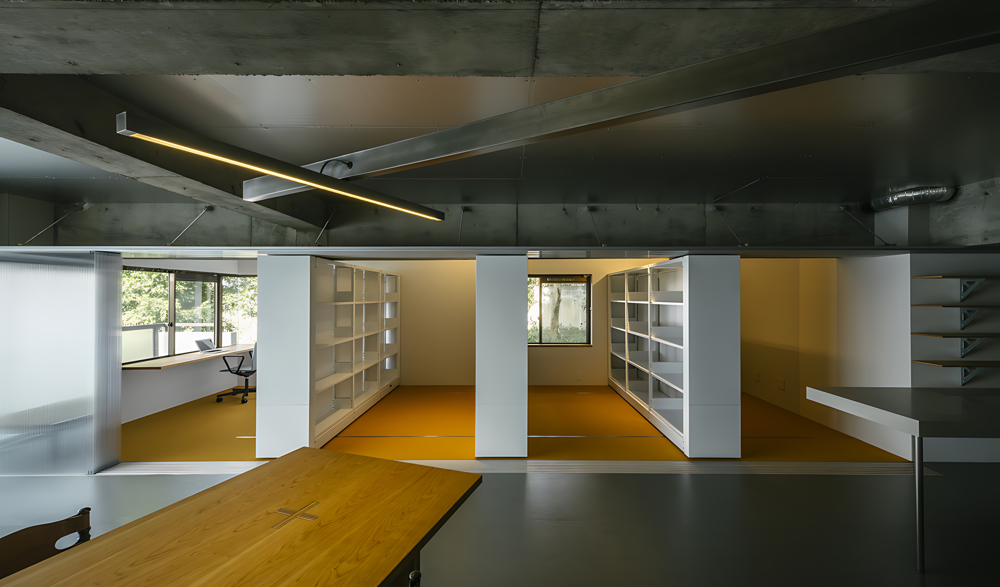Open-plan living has dominated contemporary home design in recent years and has been celebrated for its airy spaciousness, light sharing, and sociability. Breaking down walls can truly make a small home feel larger and more connected. However, this openness also brings with it a paradox: without any boundaries, residents often feel constantly exposed. During the COVID-19 pandemic, the drawbacks of wall-less floor plans became particularly apparent—noise and food odors permeating every space, and the lack of quiet corners to escape to within one’s own home. Now, the challenge for architects is to strike a balance: how can we restore privacy, comfort, and a sense of personal space while preserving the flexibility and fun of open layouts? This article explores design strategies—from subtle spatial zoning to strategic material choices—that restore privacy and sanctuary in open-plan interiors without completely reverting to partitioned rooms.
The Open Plan Dilemma: Openness and Privacy
Open-plan interiors eliminate physical barriers between functions (kitchen, living, dining, etc.), creating a seamless “great room.” This fluidity encourages interaction and makes a home feel bright and spacious. However, psychological research and architectural theory suggest that people need privacy and enclosed spaces for comfort. Christopher Alexander’s book Pattern Language introduced the idea of a “privacy gradient” in a home, a sequence from public to private spaces. When every space is equally open, “the homogeneity of the space… eliminates all the subtleties of social interaction.” In other words, without a sheltered corner or a threshold to retreat behind, occupants may feel exposed and unable to regulate their social exposure. Design psychology also draws on the view-shelter theory, which states that people are most comfortable when they have a shelter (a recess or backrest to protect them from being watched) combined with a viewpoint (a view of what is happening). A large, open room provides plenty of viewing space but offers very little shelter. Therefore, while open plans are excellent for openness, they typically do not offer the option of retreat, which is often vital for relaxation, focus, or simply a sense of personal space.
The effects of this lack of privacy are tangible. In office environments, completely open layouts have been linked to higher stress and lower concentration. At home, many people complain that removing walls means that kitchen noise and clutter are always in view (and within earshot) and that there is no “quiet room” to escape to. As one interior designer put it, “Having a room to escape to—the famous ‘room of one’s own’—has taken on a new meaning more than ever before.” The goal isn’t to completely abandon openness—many homeowners still love open concepts for light and connection—but to temper them with elements that define the space and provide optional privacy. This balance is sometimes referred to as “broken-plan” living: maintaining the airy feel of an open plan, but introducing slight breaks and buffers so that each area can retain “an element of privacy and private use.” In the following sections, we look at how spatial zoning techniques and material choices can work together to achieve this balance.
Wall-less Urban Planning: Spatial Strategies for Proximity
One of the keys to restoring privacy is to create spatial zones within an open floor plan—essentially dividing the large space into smaller “rooms” or niches without erecting full walls. Designers use partial-height partitions, movable screens, level changes, built-in furniture, and other architectural cues to subtly separate spaces. The idea here is to create different pockets for different activities (cooking, eating, working, relaxing); this way, while the overall flow remains open, being in one area feels visually and acoustically separated from the others. This “zoning” can be achieved through permanent design features or flexible, adjustable elements.
Partial Dividers and Broken Floor Plans: Instead of walls from floor to ceiling, partial dividers such as half walls, shelving units, or cabinets can create a boundary at or below eye level. These low partitions preserve sight lines and light transfer while indicating a psychological separation. For example, a waist-high mid-wall between the kitchen and living room can hide kitchen clutter from the sofa view and even double as a bar counter without blocking light or conversation. Expanded doorways or framed openings (sometimes with sliding doors that remain open most of the time) are another strategy: by widening a doorway between rooms or adding a large arch, designers maintain a sense of flow while preserving the suggestion of separate spaces. A contractor says, “We’re seeing more and more expanded passageways between rooms,” adding, “These partial openings allow for an open flow while maintaining the feel of separate spaces. ” In new buildings, architects can plan L-shaped or T-shaped layouts where different uses are arranged around a corner, providing a degree of privacy without complete separation.
Movable Screens and Flexible Partitions: Nothing can match the adaptability of sliding screens, pocket doors, or track-mounted screens to an open floor plan. These elements allow residents to fully shape their spaces according to their needs. In a contemporary Japanese renovation, the architect installed floor-to-ceiling polycarbonate sliding panels that can be closed to divide bedrooms or opened to merge them with the living area. The semi-transparent polycarbonate material provides privacy while allowing light to enter—essentially a modern interpretation of the traditional shoji screen (see image below). When open, the 86 m² apartment becomes a seamless loft space; when closed, each family member has their own private nook. Similarly, the bedrooms in this apartment are divided by wheeled movable bookshelf walls that can be repositioned to reconfigure sleeping areas as the children grow. Flexibility is the key word. During the day or for social gatherings, the home can be open-concept; at night or for focused tasks, it can be divided into smaller rooms. This dynamic privacy is a direct response to the understanding that a family’s needs change throughout the day and over the years. This approach is echoed in many urban studios and lofts: heavy curtains that can be drawn around a bed, accordion-folded or pocket doors that disappear into walls, or ceiling-mounted track curtains that form accordions to divide the space as needed. Designers point out that even fabric or woven curtains can be effective: “Bookcases, privacy curtains [or] curtains as furniture and other accessories… can divide an open space and serve as an alternative to more permanent partitions.” With careful placement, such movable dividers “create zones that enhance the sense of separation between areas”.

Movable bookcase partitions and sliding polycarbonate panels in a Japanese open-plan apartment allow the space to expand or contract as needed. In this configuration, the shelving units create two small semi-private rooms within the larger living area.
Vertical and Level Changes: When solid walls are not desired, designers turn to vertical geometry for subtle spatial separation. A few steps up or down, a change in floor or ceiling height, or a lowered beam can mark the boundary of a “room” without any doors. For example, elevating a reading nook onto a raised platform or lowering the ceiling above a kitchen island can give this area a different, more comfortable scale—almost like an invisible room within a larger volume. An architect describes solving the problem of a very large open room by squeezing the kitchen into a low-ceilinged, wide-arched recess: “It feels very open visually, but [the arch] separates the kitchen activities from the entertainment area”. Beams, columns, or plinths can also “suggest a division without actually creating one,” breaking up the monotony of a flat, uninterrupted ceiling while keeping spaces connected. This prevents a “warehouse” effect and creates a hierarchy of spaces. Adding a bay window or niche around the perimeter can even provide a semi-enclosed retreat: a recessed window seat becomes a small room in itself, an inviting corner to linger with a book. Architect Andrew Oyen says, “Niches and recesses that are both part of a space and separate from it, while remaining connected to the rooms they serve, often create places for specific activities, such as a library or study.” In summary, diversifying sections (steps, platforms, ceiling heights) adds visual interest and helps define intimate sub-spaces without the need for doors.
Furniture Arrangement and Rugs: Even without any built-in partitions, furniture can be arranged thoughtfully to create implied areas. For example, a sofa facing away from another area can act as a low divider and define the boundary of the living space. Placing a console or low shelf behind the sofa reinforces the division. Create “rooms within a room” by grouping furniture into intimate clusters—such as a pair of armchairs with a small side table in a corner. Area rugs are another powerful zoning tool: a rug under the dining table signals a change in function by separating that area from the circulation path or the bare floor of the kitchen (and also reduces noise in that area). Interior designers often use different lighting for different areas: a pendant lamp that gathers light above the dining table, floor lamps in the adjacent seating area, and softer lighting. These cues help travelers intuitively read an open plan as a series of purposeful spaces rather than a single cavernous room.
Semi-Transparent Boundaries: When more privacy is needed but openness must be maintained, using transparent or semi-transparent barriers can be an effective compromise. Interior windows or glass partitions allow visual continuity while physically separating sound and odors. For example, a steel-framed glass wall can enclose a home office or playroom—everyone can see inside and share light, but noise is kept under control. For more visual protection, architects turn to textured or semi-transparent glass. Semi-transparent glass panels (frosted, frosted, or ribbed) can serve as interior “windows” or sliding doors that allow light to enter while concealing details and faces. In a home on Martha’s Vineyard, designers used double-sided glass cabinet partitions between the kitchen and family room to create the feeling of two light-filled rooms. Glass block walls are another retro approach that is seeing a revival—they blur the view and reduce noise, but still allow the sparkle of daylight to pass through. Similarly, open shelves or lattice curtains can create a filtered view between areas. A bookcase divider filled with books and objects not only provides storage but also cuts lines of sight enough to give a sense of containment. New York-based designer Markham Roberts used two bookcases, each 5 feet high, placed back-to-back to create a comfortable workspace in a large, open apartment: “They don’t separate the workspace from the rest of the room, but they effectively create a curtain that gives the smaller area a sense of comfort.” In summary, a wide variety of architectural additions, from half walls and shelves to sliding screens, glass partitions, curtains, and level changes, can bring back a sense of order and sanctuary in an open layout. The best solutions ensure that these added elements feel seamlessly integrated into the design (rather than like afterthoughts) and allow the home to continue flowing and breathing as a whole.
Materials Matter: Using Surfaces and Sound to Eliminate Privacy
Spatial layout alone does not tell the whole story. Material selection plays a crucial role in shaping how special or public a space feels. The texture, opacity, and acoustic properties of materials can enhance openness or create a cocoon effect. In an open-plan interior, the thoughtful use of sound-absorbing, opaque, or tactile materials can help define comfortable retreats and reduce the sense of exposure. Here, we explore how materials—from soft textiles to wooden panels and acoustic finishes—can be used to give each area its own atmosphere and sense of privacy.
Soundproofing: One of the biggest complaints in open-plan homes is that noise travels everywhere—the clatter of dishes, the TV in the living room being heard in the office corner, children playing echoing throughout the entire floor. While some noise in a shared space is inevitable, good material choices can reduce sound transmission and improve acoustic privacy. Designers often use sound-absorbing materials liberally in open interiors to reduce reverberation: thick carpets, upholstered furniture, padded panels, and heavy curtains, for example. Covering previously bare surfaces with softer or more porous materials helps absorb sound waves that would otherwise bounce off them. For example, adding a lowered acoustic ceiling panel (or even suspended “sails” or partitions) above a noisy kitchen area can significantly reduce the noise spreading into the adjacent living space. Textiles are particularly effective: full-length curtains not only visually screen off an area but also muffle sounds from one side to the other. Even when open, fabric panels on windows or walls will absorb echoes. Today’s design market offers high-style solutions such as felt wall coverings, decorative acoustic tiles, and even noise-reducing acoustic fabrics. Architects can create “quiet pockets” or at least reduce auditory distractions by ensuring that each functional area in an open plan has some “soft” materials (e.g., a sectional sofa and plush rug in the living room, upholstered dining chairs, a cork-covered play area floor). As a result, someone reading a book on one side of a large room will not feel overwhelmed by a conversation taking place on the other side. Research on shared spaces shows that poor acoustics in a room can lead to stress and fatigue among occupants, so these material changes are not only aesthetic but also vital for well-being.
Visual Privacy and Light Control: Materials also determine what you can and cannot see. To provide privacy without losing natural light, designers are turning to semi-transparent materials. We mentioned frosted or textured glass for interior partitions. Another example is semi-transparent polycarbonate or acrylic panels (as used in the Japanese case study above), which allow bright daylight to pass through while concealing the details behind them. Even transparent curtains can serve as a visual cover that maintains an overall sense of openness while signaling “do not disturb” to others in the home. In small apartments, some residents use fabric or bamboo folding curtains—these add an opaque layer that can be opened to hide a cluttered desk or create a changing area in a studio. A clever material hack is the use of slatted wooden or CNC-cut panels that behave like a modern lattice: when sitting in one area, your view through the slats is limited, giving a sense of enclosure, yet the space still feels airy and light-filled. Such semi-transparent dividers can be seen in many contemporary loft renovations—for example, a wooden slatted wall that separates a bedroom corner from the main space while allowing light and shadow patterns to pass through. In addition to partitions, choosing opaque panels for specific surfaces can also create a closed-off corner feel. In an open plan, imagine a small workspace with a wooden-paneled wall behind it; the darker, harder surface behind your desk can make it feel like a small room, even though the other side is open. Similarly, painting a niche or window recess a darker, contrasting color than the rest of the white open room can psychologically set it apart as a different, intimate spot.
Natural and Tactile Materials for Comfort: The wide-open spaces and hard surfaces (such as drywall, concrete ceilings, and slippery tile floors) of many open-plan interiors can feel stark and impersonal, the opposite of cozy. Using warmer, more tactile materials in certain areas helps create a shelter-like feeling. For example, lining the inside of a reading nook with wood not only visually distinguishes it but also gives it a cave-like warmth. Many Scandinavian open-plan homes achieve comfort through the generous use of natural wood paneling, which adds visual warmth and absorbs some sound. A simple wooden screen or cork floor in one area can signal a transition to a softer, calmer space. Even furniture materials contribute to this: a high-backed leather chaise longue or a fabric-shaded divan provides a personal bubble within the open space. In a recently built compact two-person home in Tokyo, architects used earthy materials—lime plaster and linoleum flooring—and incorporated the couple’s vintage wooden furniture to infuse the open vertical layout with a human scale and a sense of “personal comfort.” The design maintains a sense of both intimacy and the comfort of having one’s own space, even as light and air flow through the vertically connected rooms, thanks to the material textures.
Lighting and Transparency: Beyond permanent materials, consider the role of lighting as a temporary “material.” In an open plan, shared lighting can flatten the atmosphere—but if each area has its own lighting mood, it creates a kind of material differentiation. A corner warmly lit by a table lamp feels more secluded at night than a brightly lit kitchen. Some homes now use smart lighting that dims or changes color in different areas, creating a soft glow sanctuary in the middle of an open space. Technology also offers new materials such as smart glass, which can change from transparent to frosted at the touch of a button, providing optional visual privacy for a glass-walled study or bedroom, for example. Although costly, such innovations point to a future where material properties can be changed only when needed to provide privacy.

Semi-transparent ribbed polycarbonate panels used as sliding room dividers. When closed (as shown here), they create visual separation and privacy by concealing details, yet still allow light to pass through, preventing the space from feeling dark or completely enclosed. Such materials provide a clever balance between openness and privacy in open-plan layouts.
In summary, materials can enhance the spatial zoning of an open-plan interior: they soften sound, filter views, and add tactile warmth to areas intended for retreat. A successful design will layer these elements—for example, a partial height divider (spatial strategy) plus a change in material on either side, plus some acoustic attenuation—to create an enclave that feels special. It is typically a mix of low and high technology: thick curtains and bookshelves on one side, laminated interchangeable glass on the other. The material palette (soft versus hard, transparent versus opaque, noisy versus quiet) becomes as important as the floor plan in ensuring privacy.
Designing Transparency and Privacy: Examples and Insights
Architects around the world are finding creative ways to reconcile openness with people’s need for privacy. A few brief case studies highlight how the above principles come together in practice:
– Adaptable Family Apartment, Fukuoka (Japan): As mentioned earlier, this 86 m² apartment is designed for a family. apartment renovation uses movable library-style bookshelves to divide the bedrooms and sliding polycarbonate doors throughout the living area. During the day, semi-transparent panels slide away, transforming the home into a seamless space; at night, the children’s rooms become cozy, quiet pods. The thick polycarbonate and bookshelves not only divide the space but also act as a buffer against noise and visual distractions. Most importantly, the materials used (white shelves, lightweight panels) ensure that the apartment feels bright and open rather than heavy. This design demonstrates how flexibility can be achieved to allow for varying degrees of privacy when needed.

– Two-Person Vertical House, Tokyo (Japan): For a couple, the architect created continuity between floors (an open staircase, double-height voids) to achieve an airy openness in a narrow three-story house, but carefully positioned stepped floor slabs and terraces as buffers. Each person’s space at different levels is “delicately interconnected” yet still “privacy and a sense of personal space are preserved.” Transitional outdoor terraces and a lowered ground floor serves as a threshold, creating a psychological separation between the street, the communal living level, and the more private upper level. Materials such as wooden-framed glass doors at the entrance provide a soft visual buffer—you can see the activity beyond, but when you pass through, you feel like you are entering a more private space. This example highlights the use of threshold elements (level changes, entrance sequences) to mediate between public and private spaces, even in an open vertical layout.

– Sunday Home, Melbourne (Australia): This project (nicknamed “Sunday”) has divided a previously open space into stepped areas by adding walls of partial height and carpentry units. A floor-to-ceiling storage wall with wide openings between the kitchen and living room has been installed—providing storage and display space while maintaining views through the openings, yet clearly defining a boundary. Additionally, a small window sill has been added next to the corner window, creating a mini relaxation area within the open plan. The design, which combines solid elements and open shelves, has achieved a “broken plan” that residents report makes them feel much more comfortable both hosting and relaxing.
– Historical Inspiration: Traditional architecture offers examples of balancing openness and privacy. For example, Japanese houses have historically used shoji and fusuma screens to divide spaces flexibly—panels can be opened during the day to create a larger room and closed at night to create intimate sleeping areas. These homes also feature an engawa (narrow veranda), a transitional, semi-private space that is neither entirely inside nor outside. The concept of the courtyard or riwaq (curved porch) in Middle Eastern houses has also created an open gathering space that is closed to public view—an inward-looking private open plan. Although modern houses are different, the lesson to be learned here is that cultural solutions often use layered filters (screens, courtyards, curtains) to regulate visibility and togetherness. Contemporary designers can draw inspiration from these ideas—for example, using courtyard atriums or inner gardens as open yet protected spaces within a home, or employing perforated screens inspired by mashrabiya to divide rooms.
Each of these examples reinforces the idea that privacy can be designed without compromising openness, but that this requires careful planning of space and materials. Small gestures—here a half-wall, there a sliding curtain, a change in floor texture, a surrounding shelf unit—accumulate to make an open-plan interior much more livable and responsive to human needs.
Towards Homes that Balance Social Life and Seclusion
In the evolution of residential design, we are entering a more balanced stage of openness. Homeowners and architects have learned from the excesses of unlimited open-concept design and its shortcomings. Creative answers have been given to the question, “How can we get the best of both worlds?” spatial zoning that divides spaciousness into human-scale niches and material selections that cocoon these niches in comfort—whether through acoustic softness, filtered transparency, or tactile warmth. Ultimately, restoring privacy is about providing choice and variety. A well-designed open-plan home offers places to gather and retreat, as well as energizing and calming spaces. As one designer put it, “We need quiet breathing spaces in our homes to nourish those moments in our busy lives.”
In practical terms, future homes will likely feature more sliding elements, hybrid partitions, and multi-level corners—a kind of architectural toolkit for personalization. Additionally, we can expect living spaces to continue drawing inspiration from offices (phone booth partitions, acoustic panels) and nature (biophilic niches, enclosed gardens serving as visual screens) to enhance a sense of shelter. However, the pendulum is not swinging back to Victorian-era salons divided into compartments; rather, it is finding a middle ground where openness and privacy coexist. As we can see, a home can be open and light-filled without exposing its inhabitants to constant sight and noise. By thoughtfully dividing the space into zones and layering materials, architects are creating interiors that feel as open and inviting as ever, but with a newly discovered whisper of containment—a corner to curl up in, a door to close when needed, and the sense that not every moment in the home is on display. This balanced approach ultimately serves our innate dual needs: to be together and to be at peace with ourselves.





















